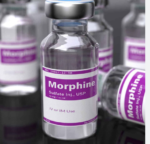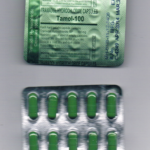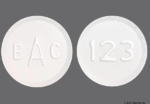Pain relievers are medicines that reduce or relieve headaches, sore muscles, arthritis, or other aches and pains. There are many different pain medicines, and each one has advantages and risks. Some types of pain respond better to certain medicines than others. Each person may also have a slightly different response to a pain reliever.
Over-the-counter (OTC) medicines are good for many types of pain. There are two main types of OTC pain medicines: acetaminophen (Tylenol) and nonsteroidal anti-inflammatory drugs (NSAIDs). Aspirin, naproxen (Aleve), and ibuprofen (Advil, Motrin) are examples of OTC NSAIDs.
If OTC medicines don’t relieve your pain, your doctor may prescribe something stronger. Many NSAIDs are also available at higher prescription doses. The most powerful pain relievers are opioids. They are very effective, but they can sometimes have serious side effects. There is also a risk of addiction. Because of the risks, you must use them only under a doctor’s supervision.
One major difference between anti-inflammatories and opioid analgesics is that the former have a “ceiling effect” — that is, continuous dose escalation does not provide concomitant escalation in pain relief.

Opioids and non-steroidal anti-inflammatory drugs (NSAIDs) are the commonest drugs used to treat pain. Opioids mimic the actions of endogenous opioid peptides by interacting with mu, delta or kappa opioid receptors. The opioid receptors are coupled to G1 proteins and the actions of the opioids are mainly inhibitory.
They close N-type voltage-operated calcium channels and open calcium-dependent inwardly-rectifying potassium channels. This results in hyperpolarization and a reduction in neuronal excitability. They also decrease intracellular cAMP which modulates the release of nociceptive neurotransmitters (e.g. substance P). Inhibition of prostaglandin synthesis by cyclooxygenase is the principal mode of the analgesic and anti-inflammatory actions of NSAIDs. Cyclo-oxygenase is inhibited irreversibly by aspirin and reversibly by other NSAIDs.
The widespread inhibition of cyclo-oxygenase is responsible for many of the adverse effects of these drugs. NSAIDs also reduce prostaglandin production within the CNS. This is the main action of paracetamol.
One reason opioids are so useful in the treatment of chronic pain is that as tolerance to a dose develops, the dose can be raised. In fact, there is no limit to how high opioid dosing can go -– keeping in mind that higher doses can be associated with unpleasant and/or even dangerous side effects.
Pain Medications, Pain Relief, and Pain Management








